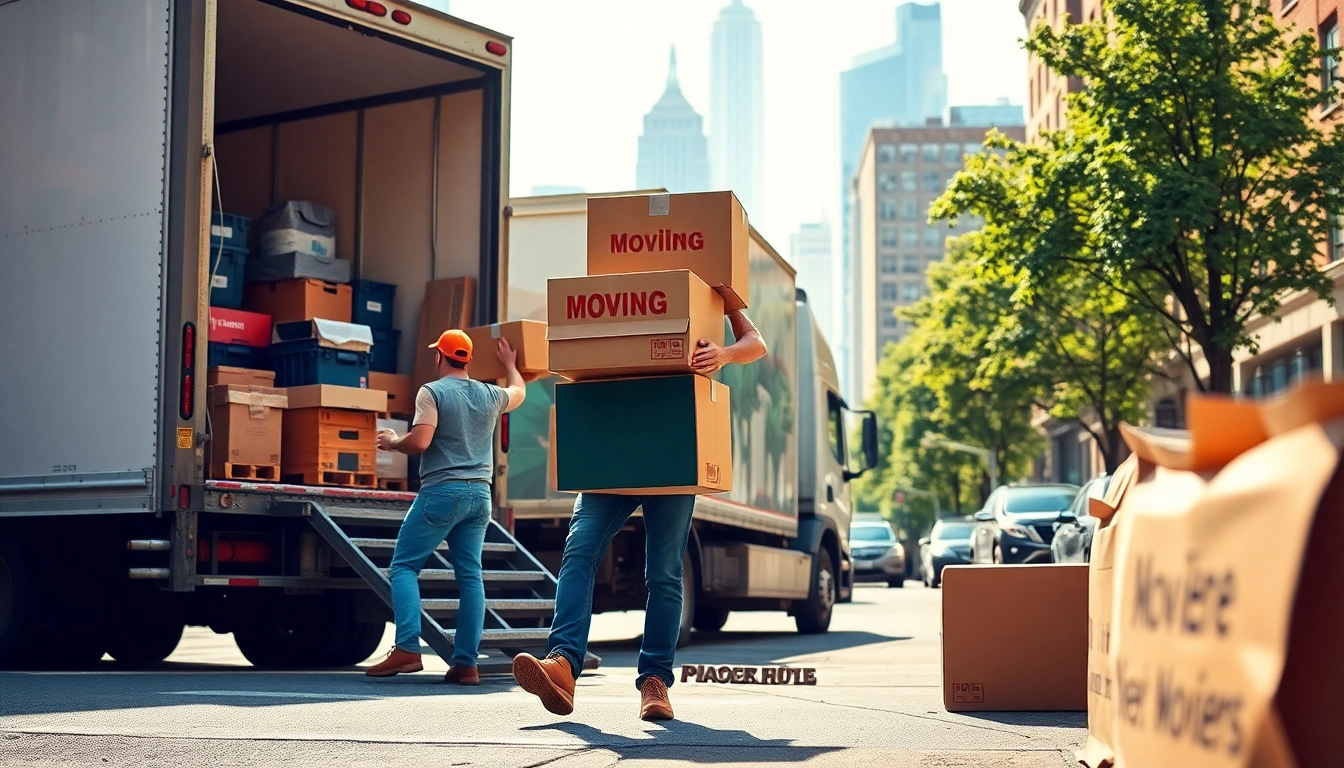Understanding the Moving Process
Embarking on a move can be both an exciting and daunting experience. The act of relocating brings a mix of emotions, from anticipation to stress. Understanding the various aspects involved in the moving process can help facilitate a smoother transition. For more information on service options, you can visit https://bennettsmoving.com/.
Overview of Residential Moving
Residential moving typically involves relocating from one home to another, whether it be across town or to a different state entirely. The complexity of a residential move can vary significantly based on the size of the home and the distance being covered. Families with children or individuals accumulating years of personal belongings find their tasks compounded with additional challenges.
Challenges Involved in Relocation
Relocation presents several obstacles often categorized into logistical, emotional, and financial challenges. Logistically, organizing moving dates, packing belongings, and ensuring that utilities are set up at the new location can be overwhelming. Emotionally, leaving behind a familiar environment can cause anxiety and uncertainty. Financial challenges often arise when underestimating the costs associated with moving, which can lead to budgetary issues.
Benefits of Hiring Professional Movers
While many individuals consider handling a move independently to save money, hiring professional movers can significantly alleviate stress. Professional movers possess the expertise to handle logistics, often providing packing, loading, and transportation services. Furthermore, they come equipped with the necessary tools and manpower to ensure that valuables are handled with utmost care, minimizing the risk of damage.
Choosing the Right Moving Services
There are numerous factors to consider when selecting moving services that align with your specific needs. Conducting due diligence ensures that you find credible and reliable movers.
Factors to Consider When Selecting Movers
Key considerations when selecting moving services include the company’s reputation, range of services offered, and customer reviews. It’s advisable to request quotes from multiple companies and compare them, keeping an eye out for hidden fees. Choose a service provider whose terms align best with your moving requirements and budget.
Comparing Local vs Long-Distance Services
Understanding the difference between local and long-distance moving services is crucial in making an informed decision. Local movers typically service a defined radius, which may affect their hourly rate, while long-distance movers offer services to a broader geographical range. Long-distance moving often requires more regulatory compliance, including weight limitations and interstate transport regulations, which can add complexity to the process.
Reviews and Recommendations for Movers
Consumer reviews act as a valuable resource for determining the quality of service provided by moving companies. Seek testimonials from previous clients and read through reviews on independent platforms to get a comprehensive understanding of their reliability and customer service. Recommendations from friends or family who have recently moved can also provide insight into selecting trustworthy movers.
Preparing for Your Move
Preparation is key to a successful move. Proper planning can significantly enhance the efficiency of the entire process.
Creating an Effective Moving Checklist
A moving checklist serves as an invaluable tool to keep track of all tasks required for a seamless move. Key actions listed should include notifying service providers, packing items methodically, and confirming moving dates. Having a structured approach prevents last-minute issues and helps maintain organization throughout the process.
Packing Tips for Different Environments
Packing styles must adapt to the unique challenges posed by the environment you are moving from. For urban dwellers, use space-saving packing techniques, and ensure that fragile items are securely cushioned. In the case of homeowners with outdoor belongings, organize items by season, ensuring that lawn equipment and patio furniture are adequately packed for transport.
Essential Supplies for a Smooth Transition
Acquiring the right packing supplies is essential for safeguarding your belongings. Essential supplies typically include sturdy boxes, packing tape, bubble wrap, and markers for labeling. Additionally, tools like dollies can make moving heavy items manageable by enhancing efficiency during the loading and unloading process.
During the Move: Best Practices
On moving day, effective communication and organization are crucial for ensuring a smooth transition.
How to Communicate with Your Moving Team
Establishing clear lines of communication with your moving team is vital. Before the move, discuss expectations, timelines, and any specialized requests you have. During the moving process, ensure that everyone involved understands their tasks and responsibilities, allowing for a coordinated effort.
Managing Time Effectively on Moving Day
Time management plays a significant role on moving day. Ensure that you create a timeline that includes specific tasks at designated intervals. Organizations like creating a timeline, allowing for breaks, and counting on extra help can alleviate pressure and promote efficiency.
Safeguarding Your Belongings During Transit
Taking the necessary precautions to safeguard your belongings during transit is crucial. Use high-quality packing materials to shield fragile items and ensure heavier items are loaded securely to prevent shifting while in transport. Additionally, consider having insurance to cover any potential damage during the moving process.
Post-Move Communication and Feedback
Once the move is complete, the focus shifts to settling in and evaluating the services received.
Unpacking and Settling into Your New Home
Unpacking is an opportunity to organize your new living space efficiently. Prioritize unpacking essentials first, followed by less-critical items, allowing you to gradually transition into your new home. Take advantage of this time to assess your needs and arrange furniture and belongings in a way that suits your lifestyle.
Providing Feedback to Your Moving Company
After your move, take a moment to provide feedback to your moving company. Whether your experience was positive or contained areas of improvement, your insights can assist the company in elevating their services. Proper reviews also support potential clients in their decision-making processes.
Planning Future Moves: Building Relationships with Movers
Establishing a relationship with a reliable moving company can simplify any future relocation needs. Familiarity with your preferences and requirements enables them to provide tailored services that save time and enhance the moving experience.



